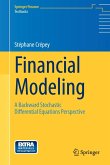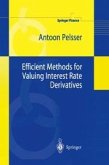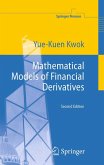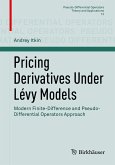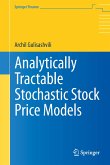Dieser Download kann aus rechtlichen Gründen nur mit Rechnungsadresse in A, B, BG, CY, CZ, D, DK, EW, E, FIN, F, GR, HR, H, IRL, I, LT, L, LR, M, NL, PL, P, R, S, SLO, SK ausgeliefert werden.
"This book is devoted to pricing financial derivatives with a partial differential equation approach. It has two parts, each with four chapters. ... The book covers a variety of topics in finance, such as forward and futures contracts, the Black-Scholes model, European and American type options, free boundary problems, barrier options, lookback options, multi-asset options, interest rate models, interest rate derivatives, swaps, swaptions, caps, floors, and collars. The treatment is mathematically rigorous. There are exercises at the end of each chapter." (Elias Shiu, Zentralblatt MATH, Vol. 1061 (12), 2005)
"This book is mainly devoted to finite difference numerical methods for solving partial differential equations (PDEs) models of pricing a wide variety of financial derivative securities... the book is highly well designed and structured as a textbook for graduate students following a mathematical finance program, which includes Black-Scholes dynamic hedging methodology to price financial derivatives. Also, it is a very valuable reference for those researchers working in numerical methods in financial derivatives, either with a more financial or mathematical background." -- MATHEMATICAL REVIEWS




